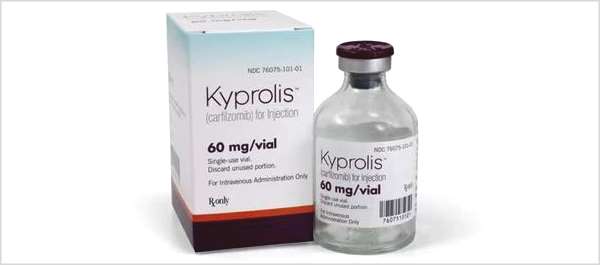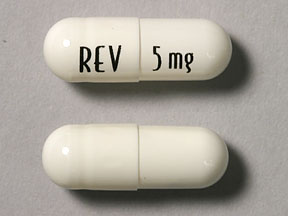
Recently Diagnosed or Relapsed? Stop Looking For a Miracle Cure, and Use Evidence-Based Therapies To Enhance Your Treatment and Prolong Your Remission
Multiple Myeloma an incurable disease, but I have spent the last 25 years in remission using a blend of conventional oncology and evidence-based nutrition, supplementation, and lifestyle therapies from peer-reviewed studies that your oncologist probably hasn't told you about.
Click the orange button to the right to learn more about what you can start doing today.
- You are here:
- Home »
- Blog »
- Multiple Myeloma »
- Clinical Trial Chemo Comparison for Multiple Myeloma-A to A
Clinical Trial Chemo Comparison for Multiple Myeloma-A to A

Comparing research for multiple myeloma (MM) therapies is frustrating at best, dangerous at worst. The goal for any/all MM patients is to compare one chemotherapy regimen to another in a sort of apples to apples methodology.
If you’ve been diagnosed with multiple myeloma (MM), its in your interest to read about the chemo regimens that you may be taking. Though not all clinical trial data measure and compare the same things all the time, if the MM patient is trying to compare two different chemotherapy regimens or two different doublets, triplets, etc. then he/she should be able to gain an understanding of how the regimen may affect him/her.
For example, the older, more frail MM patient may care more about adverse events aka side effects while the younger, stronger patient may care more about OS or sCR.
It is said the while multiple myeloma is an incurable blood cancer, it is very “treatable.” MM’s treatability is only a positive if you, the patient, understands how you are being treated.
In order to understand your treatment, you should try to understand different chemotherapy regimens and compare them.
Comparing research for multiple myeloma (MM) therapies is frustrating at best, dangerous at worst. The goal for any/all MM patients is to compare one chemotherapy regimen to another in a sort of apples to apples methodology.
Doing this comparison shouldn’t require a PhD in oncology.
MM patients and caregivers are simply trying to understand what may happen to them if they undergo such and such a therapy. Pros, cons, the good, the bad, the ugly, etc.
I’ve chosen a study below, that compares two different ways to administer the same chemotherapy- daratumumab aka darzelex. I’m trying to keep this analysis simple…
- Trial comparing IV administration to SC administration (intravenous vs. subcutaneous)
- Size of the trial (# of patients)
- Qualifying criteria (Patients had received at least 3 prior lines of therapy)
- What the trial is measuring (endpoints such as ORR, PFS, OS- lots of confusing terms to learn)
- Median follow-up (how long did the trial last?)
- The Safety Profile– (this is the comparison of adverse events- comparison of 1/2 AE or 3/4 AE- the more serious side effects and even if there are any deaths for a given therapy.
Have you been diagnosed with multiple myeloma? Are you trying to compare one induction combo with another? Trying to compare Revlimid plus dex. with a triplet such as darzelex, revlimid and velcade? Having difficulty? Yikes!
Scroll down the page and post a question or a comment. I will reply to you ASAP.
Hang in there,
David Emerson
- MM Survivor
- MM Cancer Coach
- Director PeopleBeatingCancer
Recommended Reading:
- The Elderly Multiple Myeloma Patient-To Treat or To ASCT?
- Newly Diagnosed Multiple Myeloma Patients Have Poor Understanding of Their Disease
- Multiple Myeloma Clinical Trials- Misleading at Best, Dangerous at worst…
Approval Sought for Subcutaneous Formulation of Daratumumab in Multiple Myeloma
“Daratumumab is currently approved for several indications in multiple myeloma in an intravenous (IV) formulation.
The BLA is supported by data from the phase III COLUMBA trial, which was presented at the 2019 ASCO Annual Meeting.2 The trial was a noninferiority comparison between the IV administration of daratumumab and the SC formulation in patients with multiple myeloma. Additional data from the phase II PLEIADES trial also were included in the BLA submission.
The SC formulation of the anti-CD38 monoclonal antibody is co-formulated with recombinant human hyaluronidase PH20 (rHuPH20) using the Halozyme Enhanze drug delivery technology…
In the randomized, open-label, multicenter phase III COLUMBA (MMY3012) trial, 522 patients with relapsed or refractory multiple myeloma were randomized to receive IV (n = 259) or SC (n = 263) daratumumab. Patients had received at least 3 prior lines of therapy, including a proteasome inhibitor (PI) and an immunomodulatory drug (IMiD), or had disease that was refractory to both PI and an IMiD.
In the SC group, daratumumab was administered at a flat dose of 1800 mg over 3 to 5 minutes, and the group was given daratumumab at 16 mg/kg. Treatment in both arms was given weekly in the first 2 cycles followed by every 2 weeks for cycles 3 to 6 and every 4 weeks from cycle 7 until disease progression. Each cycle was 28 days, and patients were treated until disease progression or unacceptable toxicity.
Co-primary endpoints of the trial were overall response rate (ORR) and maximum Ctrough concentration.
The median duration of infusion in the IV arm was 7.0 hours for the first infusion, 4.3 hours for the second infusion, and 3.4 hours for subsequent infusions. The median duration of treatment was about 5 months, with a median of 6 completed cycles.
In the SC arm, the ORR was 41.1% compared with 37.1% in the IV arm, meeting the criteria for noninferiority (relative risk [RR], 1.11; 95% CI, 0.89-1.37; P <.0001). With the SC formulation, the ORR consisted of a complete remission (CR) or better rate of 1.9% and a rate of very good partial response (VGPR) or better of 19.0%. In the IV formulation group, the rate of CR or better was 2.7% and the rate of VGPR or better was 17.0%.
For Ctrough, the ratio of geometric means for the SC to IV formulation was 107.93% (90% CI, 95.74%-121.67%), which also met the requirements for noninferiority.
Investigators also looked to body median as a determinant of outcome with the 2 formulations, with a flat dose used in the SC group compared with a body weight–based dose used in the IV group. The median body weight was 73.0 kg in the IV arm versus 72.4 kg in the SC arm.
Body weight did not appear to affect the efficacy findings, with the relative risk favoring noninferiority between the 2 doses for those with a weight ≥85 kg (RR, 1.34; 95% CI, 0.86-2.12) and for those with a weight ≤65 kg (RR, 1.34; 95% CI, 0.86-2.12).
After a median follow-up of 7.46 months, the median progression-free survival was 6.1 months with the IV formulation compared with 5.6 months with the SC formulation (HR, 0.99; 95% CI, 0.78-1.26; P = .9258).
At 6 months, the rate of overall survival was 83.0% with IV daratumumab versus 87.5% with SC daratumumab (HR, 0.90; 95% CI, 0.59-1.35; P = .6032).
Importantly, there were infusion-related reactions (IRR) events observed in only 12.7% of patients in the SC group compared with 34.5% seen in the IV group (odds ratio, 0.28; 95% CI, 0.18-0.44; P <.0001). The median time to onset of IRR was 1.5 hours in the IV group compared with 3.6 hours for the SC arm.
The safety profile was otherwise similar between the 2 arms. The rate of grade 3/4 neutropenia was higher in the subcutaneous group, at 13% compared with 8%. The rates of any-grade chills (11% vs 5%) and dyspnea (12% vs 6%) were lower in the SC group versus the IV group, which could have been due to a reduction in the IRRs, the investigators hypothesized…
The BLA comes close on the heels of a recent approval for daratumumabwhen used in combination with lenalidomide (Revlimid) and dexamethasone for the treatment of patients with multiple myeloma who are ineligible for autologous stem cell transplantation, based on the results of the phase III MAIA trial.


